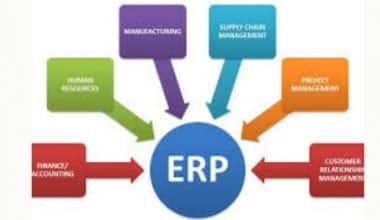To keep a firm afloat, there is a need for liabilities and equity shares to help handle expenses that may arise in the system. Liabilities in accounting are unavoidable debts a company has to pay to its lenders for example; mortgages, bank loans, or any other lump sum of money that they owe to another entity. They will have to account for it as a component of the accounting equation recorded in the balance sheet. Liabilities can be helpful most of the time in that they help to grow a small business. In this article, we will look at the definition, the examples, and the list of liabilities in accounting.
Definition of Liabilities in Accounting
By definition, liabilities in accounting are the obligations of a company resulting from previous transactions or events. The settlement of such transactions may result in the future transfer or use of assets, the provision of services, or the receipt of benefits. A list of liabilities in accounting is recorded on the right side of the balance sheet and includes loans, accounts payable, mortgages, deferred revenues, bonds, warranties, and accrued expenses.
One thing with this definition is that liabilities in accounting can be a substitute for equity as a source of financing for a business. Moreover, some liabilities, such as accounts payable or income taxes payable, are major elements of daily business operations.
Liabilities can also assist businesses in organizing successful business operations and accelerating value creation. Poor liability management, on the other hand, can have serious consequences, such as a drop in financial performance or, worse, bankruptcy.
Furthermore, liabilities determine the company’s liquidity and capital structure. If a company is not able to meet up with the liabilities they owe, it may result in the liquidation of the company or some cases may lead to bankruptcy.
What Are the 3 Types of Liabilities?
Liabilities can be broken down into three broad categories: current, future, and unknown. Any debt or legal obligation owing to a third party is considered a liability.
How Does a Company Report Its Liabilities?
A company reports its liabilities on its balance sheet. The total amount of liabilities must equal the difference between the total amount of assets and the total amount of equity, according to the accounting equation.
- Liabilities + Equity = Assets
- Assets – Equity = Liabilities
Accountants must report liabilities following accounting principles, for example, many countries around the world use the International Financial Reporting Standard (IFRS). However, many countries have their reporting standards, such as GAAP in the United States or RAP in Russia. Although the liabilities are recognized and reported following different accounting standards, the main principles are similar to the IFRS.
Furthermore, the list of liabilities in accounting is shown on a balance sheet according to the period the obligation is due. You can find all your liabilities on your company’s balance sheet, which is one of the three major financial statements.
Every balance sheet has three parts. They include:
- The assets section shows the total amount you have.
- The equity section shows how much you and other investors have put into your company so far.
- The liabilities section explains what you owe.
Balance sheets were traditionally written in two columns. The left column always is for assets and the right column is for the list of liabilities in accounting and equity.
What Is Liabilities in Balance Sheet?
Accounts Payable, Short-Term Loans Payable, Accrued Liabilities, Deferred Revenues, Bonds Payable, and many more are all examples of liability accounts in the general ledger. There are two primary types of liabilities listed on a balance sheet: Current Liabilities and Noncurrent Liabilities. The obligation to pay in the future.
What Are 5 Examples of Liabilities?
Accounts payable, salaries and wages owed, payroll taxes, incurred expenses, short-term notes payable, income taxes, interest payable, accumulated interest, utilities, rental fees, and other short-term loans are all examples of current liabilities that appear on the balance sheet.
List of Liabilities in Accounting
Below is a list of items that are regarded as liabilities, according to Accounting Tools and the Houston Chronicle:
- Accounts owed to suppliers
- Salaries owing
- Unpaid Wages
- Interest payable
- Income tax payable
- Sales tax payable
- Customer deposits or prepayments for goods or services that have not yet been delivered
- Payable lawsuits
- payable debt
- Contracts that you cannot cancel without penalty, such as a mobile phone contract
- Lease contract
- Payable insurance
- Payable benefits
- Investment taxation
- Accrued liabilities (such as interest owed but not billed for by the lender)
Examples of Liabilities in Accounting
Below are the different examples of liabilities in Accounting:
Example 1
From the definition of liabilities in accounting, a retailer goes to a wholesale supplier to get kitchen utensils. The supplier knows the retailer well and allows him to buy on credit. The supplier issues an invoice to the retailer for the utensils, which he must pay within 30 days. The amount the retailer owes on these utensils is the retailer’s liability.
Example 2
The state requires a freelance social media marketer to collect sales tax on each invoice she sends to her clients. She retains the funds in her business bank account. It is still a liability because she will still transfer the funds to the state at the end of the month.
Example 3
If a company wants to buy £500 worth of computer equipment, it can do so in a variety of ways. If liability is used, the £500 can be repaid with assets or with new liability, such as a bank loan. In a financial statement, this £300 will be shown as a liability.
Example 4
A bookseller decides to open a new store. To do so he takes out a $500,000 mortgage on a small commercial space. The mortgage is a liability because it is a payable debt.
Example 5
Assume a company that produces wine needs to purchase new equipment. They borrowed $10,000 to buy the equipment. They gain both a liability and an asset in this manner.
The accounting equation is as follows:
$10,000 increase in assets and liabilities $10,000
Assets = $10,000 Liabilities + Equity where “equity” represents the company’s total stakeholder equity.
What Is a Liability vs Debt?
At first glance, debt and liability may seem to mean the same thing, but they do not. Most of the time, debt means the money you owe, while liabilities are your financial obligations. Debt can be a liability sometimes, but not all debt is a liability.
Categories of Liabilities in Accounting
Most companies will list their liabilities on their balance sheet into two categories: current liabilities and long-term liabilities. While some companies may include a third type of liability which is contingent liabilities.
Current Liabilities
Current liabilities are also known as short liabilities. Here the debtor must pay its liabilities within a year. Experts prefer to see that a company can pay current liabilities due within a year with cash. An example of short-term liabilities in accounting is payroll expenses and accounts payable. These are money owed to vendors, monthly utilities, and similar expenses. Other examples are:
- Wages Payable. The total amount of accrued income you earn but have not yet received by employees. Because most businesses pay their employees every two weeks, this liability changes frequently.
- Interest Payable. This is the amount of interest that you must pay on short-term credit purchases. For example, businesses, like individuals, frequently use credit to finance the purchase of goods and services over short periods.
- Dividend Payable. This is the amount shareholders owe a company that has issued stock to investors and pays a dividend. This period lasts approximately two weeks, so this liability appears four times per year until the shareholder pays the dividend
- Unearned Revenues. represents customer advance payments that must be resolved through future delivery of goods or services
- Discontinued Operations Liabilities. This is a one-of-a-kind liability that most people overlook. Companies must account for the financial impact of an operation, division, or entity that is currently for sale or has recently been sold. This includes the financial impact of a product line that is currently or has recently been discontinued.
Long-Term Liabilities
By definition, long-term liabilities in accounting is the financial obligations that can take longer than a year to repay, such as a business loan or mortgage. Alternatively, they are deferred short-term liabilities.
Long-term liabilities can be both a source of financing and amounts resulting from business operations. For example, you can use bonds or mortgages to fund large-scale projects at the company, liabilities in accounting are essential for understanding a company’s overall liquidity and capital structure.
Long-Term Liabilities Include:
- Bonds Payable. The total amount of outstanding bonds a company issues with maturities of more than one year. The bonds payable account on a balance sheet represents the face value of the company’s outstanding bonds.
- Notes Payable. This is the total number of promissory notes a company issues with maturities of more than one year. The notes payable account on a balance sheet, like bonds payable, shows the face value of the promissory notes.
- Deferred Tax Liabilities. They result from the difference between the recognized tax amount and the amount the company pays to the authorities. It essentially means that the company “underpays” taxes in the current period and will “overpay” taxes in the future.
- Mortgage Payable/Long-Term Debt. When a company obtains a mortgage or a long-term debt, it will record the amount of the face value of the borrowed principal on the balance sheet as a non-current liability.
Contingent Liabilities
Contingent liabilities are a subset of liabilities. They are potential liabilities that may or may not arise as a result of an uncertain future event. But if the outcome of the liability is probable or reasonably estimated. Then the company will report the contingent liability on the balance sheet. However, a company may not report the contingent liability on the balance sheet if the liability is not probable. But should disclose this item on the financial statements
Furthermore, legal liabilities are a common example of contingent liabilities in accounting. For example, if a company runs into a legal dispute, the company may lose the case in court because the opponent may provide stronger evidence, which will result in legal expenses.
Conclusion
Liabilities are one of the most important tools for growing a small business. A small business owner should not avoid all liabilities. Because it can increase the company value and as well use it to buy necessary equipment or computer systems.
Liabilities in Accounting FAQs
What is assets and liabilities in accounting
A company’s assets are what it owns, and its liabilities are what it owes. However, both appear on a company’s balance sheet.
Is cash a liability or asset?
In a nutshell, cash is a current asset and the first item on a company’s balance sheet.
Are all liabilities debt?
The primary distinction between liability and debt is that liabilities include all of one’s financial commitments, whereas debt primarily includes obligations related to outstanding loans. Thus, debt is a subset of liabilities.
How do you calculate current liabilities?
To calculate current liabilities, add up all of the money you owe lenders over the next year (within 12 months or less). Current liabilities include short-term loan payments (such as mortgages) and client deposits.
Related Articles
- CURRENT LIABILITIES: Definition, Examples & Calculation
- Balance Sheet Format: Best Accounting Practices with Examples (Detailed!!!)
- Balance Sheet vs. Income Statement: Examples, Differences & Relationship
- Accounts Payable vs Accounts Receivable Detailed Comparison
- HOW TO CALCULATE DEPRECIATION EXPENSE: Easy Steps and All You Need to Know
- DEFERRED REVENUE: Definition & How it Works






